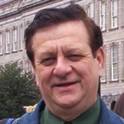| Present | PhD in Theoretical Physics, Embry-Riddle Aeronautical University | |
|
|
||
| Present | Professor of Mathematics, Embry-Riddle Aeronautical University | |
|
|
||
Disciplines
Research Interests
Honors and Awards
- The Mildred Hart Bailey Research Award, 2003
- International Who's Who of Professionals
- Phi Kappa Phi Honor Faculty
- Alpha Lambda Delta Freshmen Honor Society
